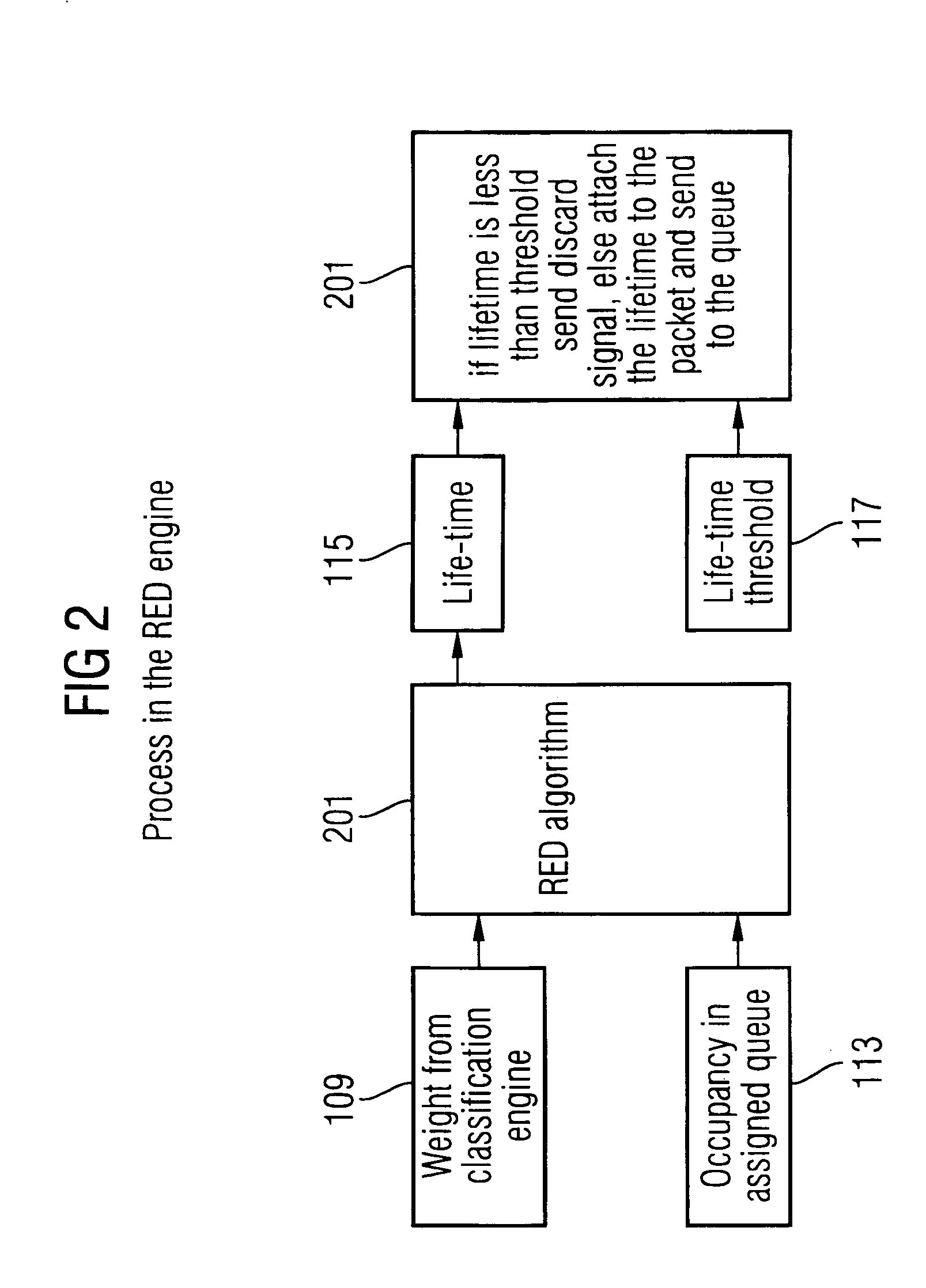Random early detect and differential packet aging flow control in switch queues
- Summary
- Abstract
- Description
- Claims
- Application Information
AI Technical Summary
Benefits of technology
Problems solved by technology
Method used
Image
Examples
Embodiment Construction
[0014]FIG. 1 is a schematic diagram illustrating a switching device 101 implementing the differential packet aging and random early detect method of the present invention to control one or more queues 11, 13, 15. A packet 103 enters a packet classification engine 105 of the switching device 101. The classification engine 105 checks the priority of the packet based on a set of rules 107 that can be programmed by a user or which can be hard-coded.
[0015] Based on the priority determined by the classification engine 105, a “weight” value 109 is determined by a weight value determination section 110 and is assigned to the packet 103. Packets that should be aged out faster from the queue will have a smaller weight, and thus have a higher probability for a shorter lifetime.
[0016] The weight value is then fed into a “random early detect” (RED) engine 111. Also, the queue occupancy (number of packets) 113 in the queue to which the packet 103 is assigned (in this example the queue 11) is de...
PUM
 Login to View More
Login to View More Abstract
Description
Claims
Application Information
 Login to View More
Login to View More - R&D
- Intellectual Property
- Life Sciences
- Materials
- Tech Scout
- Unparalleled Data Quality
- Higher Quality Content
- 60% Fewer Hallucinations
Browse by: Latest US Patents, China's latest patents, Technical Efficacy Thesaurus, Application Domain, Technology Topic, Popular Technical Reports.
© 2025 PatSnap. All rights reserved.Legal|Privacy policy|Modern Slavery Act Transparency Statement|Sitemap|About US| Contact US: help@patsnap.com



